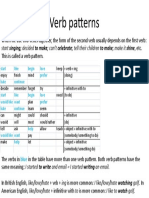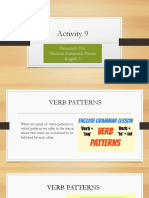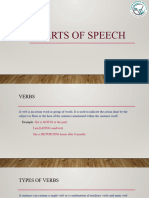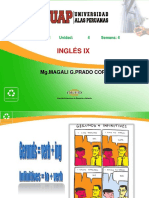0% found this document useful (0 votes)
12 views1 pageVerb Pattern
The document explains verb patterns, which describe how verbs combine with other words in sentences. It highlights that different verbs follow specific patterns, including combinations with prepositions and gerunds or infinitives. Examples illustrate the usage of verbs with both -ing forms and to + infinitive without changing the meaning.
Uploaded by
jschesdaCopyright
© © All Rights Reserved
We take content rights seriously. If you suspect this is your content, claim it here.
Available Formats
Download as DOCX, PDF, TXT or read online on Scribd
0% found this document useful (0 votes)
12 views1 pageVerb Pattern
The document explains verb patterns, which describe how verbs combine with other words in sentences. It highlights that different verbs follow specific patterns, including combinations with prepositions and gerunds or infinitives. Examples illustrate the usage of verbs with both -ing forms and to + infinitive without changing the meaning.
Uploaded by
jschesdaCopyright
© © All Rights Reserved
We take content rights seriously. If you suspect this is your content, claim it here.
Available Formats
Download as DOCX, PDF, TXT or read online on Scribd
/ 1

























































